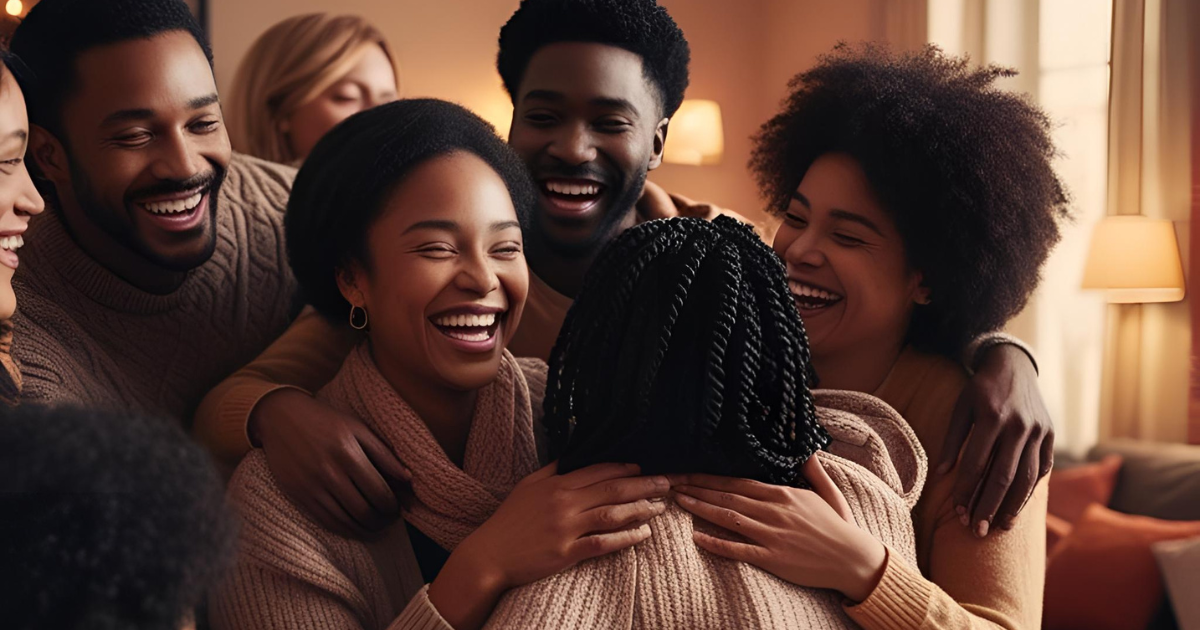Every two weeks, Samii Wood joins a group of people for what’s known as a “cuddle puddle” — a cozy, platonic gathering centered around human connection and emotional comfort.
In these sessions, participants relax into a soft nest of cushions and blankets, exchanging non-romantic touch and warmth in a safe, respectful space.
Samii, a 41-year-old from Bedford, works as a professional cuddle therapist, offering both group sessions and private one-on-one cuddle therapy.
She emphasizes the therapeutic value of touch, explaining that it can trigger powerful, science-backed effects on our mental and emotional health.
“Cuddling boosts serotonin – the hormone that makes you feel good – and oxytocin, the one responsible for bonding and emotional connection,” she explains.
#1The Power of Touch: How Cuddle Therapy Is Easing Trauma and Loneliness
Touch, according to professional cuddle therapist Samii Wood, can do much more than provide comfort—it can actually heal. Based in Bedford, Samii hosts bi-weekly group sessions called "cuddle puddles," where participants gather in cozy spaces filled with cushions and blankets to experience platonic, therapeutic touch.
She explains that human touch helps boost serotonin (the feel-good hormone) and oxytocin (the bonding hormone), while also reducing cortisol—the body’s primary stress hormone. “Touch helps regulate the nervous system,” she adds.
Many of Samii’s clients are dealing with trauma, anxiety, PTSD, or deep loneliness. Despite assumptions that such sessions might attract the wrong crowd, Samii insists her clientele is diverse: “People often expect it to be full of creepy guys. It’s not. I see people of all genders and ages.”
Pep Valerio, 36, a regular participant, describes the experience as “healing without words.” He says, “You don’t need to know what someone is going through—you just know your presence is helping them.”
In group settings, Samii often guides participants through emotional visualization exercises. “Sometimes I’ll say, ‘Picture the person you're hugging as someone you wish you could hold one more time.’ That gets me every time,” she shares. “We’ve had people burst into tears, just letting it all out in someone’s arms.”
For those who prefer more personal interaction, Samii offers one-on-one cuddle therapy sessions. These can be as simple as sitting together with a supportive arm around the shoulder or as intimate (but still platonic) as spooning, back stroking, or cradling—always tailored to the individual’s comfort and emotional needs.
#2Professional Cuddling: Setting Boundaries in a Touch-Based Therapy
While the concept of paying for cuddles may raise a few eyebrows, Samii Wood emphasizes that her sessions are strictly professional: “This is a fully clothed, platonic, and nurturing service,” she says.
To ensure safety for everyone involved, Samii conducts pre-session client screenings and requires each participant to sign a detailed consent form that outlines clear boundaries. “The experience is client-led,” she explains. “They tell me what they're comfortable with, and we maintain an open, ongoing dialogue.”
She also acknowledges that physical closeness may sometimes trigger arousal. When that happens, Samii handles it with sensitivity, redirecting the session through a short break or change in position to restore focus on the therapeutic nature of the interaction.
In the UK, cuddle therapy remains largely unregulated. However, professionals like Samii can obtain certification from Cuddle Professionals International (CPI), an organization that promotes best practices and requires members to follow strict ethical touch protocols centered on informed consent.
Despite the safeguards, Samii admits that this type of service could be vulnerable to misuse if not practiced responsibly. “If anything inappropriate happens, people are encouraged to report it—whether to the police, the local authority, or CPI directly,” she says.
CPI was founded by wellness advocate Claire Mendelsohn, who recognized the urgent need for oversight in this emerging field. Today, CPI is officially registered with the Complementary Medical Association and accredited by the International Institute for Complementary Therapists, allowing it to offer standardized training and uphold professional integrity.
Samii Wood first discovered the world of cuddle therapy after watching a documentary highlighting its popularity abroad. But in the UK, she says, people are still hesitant when it comes to giving and receiving physical affection.
She believes the pandemic has played a big role in shaping that paradox. “Covid made people crave connection more than ever, yet also more fearful of it,” she says.
In contrast, Samii notes that cuddle therapy is booming in the U.S. and parts of Europe. “It’s not as widespread here, but the need is real. People wouldn’t seek out professional cuddlers like me if it wasn’t,” she explains.
She believes that despite our hyper-connected digital lives, something vital is missing. “We think we’re all connected because we’re online. But in reality, that’s made us even more disconnected.”
Samii emphasizes there’s nothing wrong with wanting genuine, human closeness:
“There’s no shame in saying, ‘I just want to be held, to be hugged, to be seen, and to let my guard down with someone who’s just there to care.’”
#3The Science of Touch: How Human Contact Can Improve Mental and Physical Health
Touch has long been associated with emotional connection, but research now shows it may also bring measurable physical and psychological benefits.
According to a study by Danish neuroscientist Dr. Julian Packheiser and colleagues at the Institute of Cognitive Neuroscience, Ruhr University Bochum in Germany, touch can positively impact adult health—regardless of whether it comes from a loved one or a healthcare professional.
However, not all scientists agree that touch is universally beneficial, no matter the source.
Professor Sophie Scott, a cognitive neuroscience expert at University College London, emphasizes the importance of the relationship behind the touch. Referring to a brain-imaging study, she explains:
"Participants were subjected to painful stimuli while being scanned. When a partner held their hand, the brain's pain response was noticeably reduced. This wasn't just any person—it was someone they deeply trusted."
She raises concerns about professional cuddling services, noting that trust and safety are key:
"Letting someone hold your hand isn’t always simple—you need to feel emotionally secure. Unlike getting your hair cut or a manicure, hugging enters more vulnerable territory."
Professor Scott cautions that, in the absence of a solid, trusting relationship, physical touch could actually have the opposite effect:
"If people don’t feel safe, touch can become not only ineffective, but actively distressing."
Despite such caveats, the wider body of scientific research continues to support the idea that safe, consensual touch—whether from friends, partners, or professionals—can be a powerful tool for promoting wellbeing.
#4From Tai-Chi to Touch: How Cuddle Therapy Helped One Man Heal
Mr. Valerio, a 36-year-old from Bedford, had been exploring alternative healing practices like EFT tapping and tai chi when he stumbled upon professional cuddle therapy—a discovery that, according to him, transformed his emotional wellbeing.
"Cuddle therapy relieves stress, encourages relaxation, and fosters a deep sense of connection," he shares.
Led by professional cuddler Samii Wood, the sessions begin in a calming environment. Soft music plays as participants engage in gentle, hug-based warm-up exercises designed to break down emotional walls.
"Once you’ve done a few of those exercises, it actually feels completely natural to lie down and cuddle with people you’ve just met," Valerio explains. "Some attendees start crying before we’ve even settled into the cuddle puddle—it’s that emotionally powerful."
Beyond the group experiences, he’s also participated in one-on-one sessions with Samii, which he describes as deeply healing.
"Spooning can feel vulnerable—especially being the guy on the inside—but that’s the beauty of it. You experience both the act of holding and being held."
He adds: "Afterwards, I feel supported, as if some emotional weight has lifted. It lowers my walls and makes me feel seen."
Reactions
Already reacted for this post.






